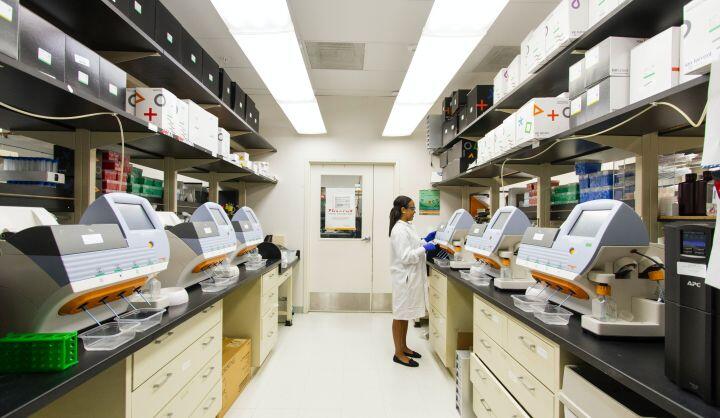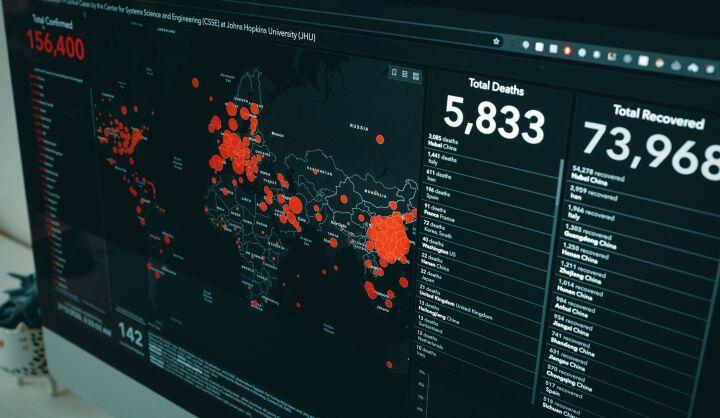- April 22, 2021
- COVID-19
As they work tirelessly to confront the COVID-19 pandemic, public sector leaders must simultaneously balance the immediate need to mitigate the spread of the disease with the longer-term implications of an economy and workforce it is leaving in distress. Addressing both challenges effectively will require leaders to identify the key skill areas and capacities their residents will need to build now and in the months ahead, as the more obvious demand for healthcare, grocery, and delivery workers shifts to perhaps less obvious and changing sectors, roles, and skills.
A recent report by Emsi, a labor market analytics firm, demonstrates that a networked approach to skills and capacity building, with real-time data at the center, may provide the impetus for regions seeking to quickly transition their workforce from resolve to recovery and even reinvention after the pandemic.
The skills and capabilities regions need today are relatively clearly defined. In addition to frontline healthcare professionals, regions need companies and workers that are skilled in constructing and re-purposing healthcare facilities, administering critical tests, and producing and distributing medical devices and equipment. Seeking to confront these immediate needs, Governor Andrew Cuomo (D) of New York, a state which is currently at the epicenter of the pandemic, recently declared, “Ventilators are to this [COVID-19] war what missiles were to World War II.”
It is within this context that Medtronic, Inc., a leading medical device manufacturer, recently announced it will be doubling production of respiratory ventilators in an effort to meet the unprecedented demand that is projected – not only in U.S., but globally – in the weeks and months ahead. Seeking to lend support, Elon Musk of Tesla even approached Medtronic engineers to explore ways the electric auto-manufacturer could potentially amplify the production of these life-saving machines.
The unfortunate reality is that the process of producing ventilators is quite complicated – involving more than 1,500 parts – and the models which are in highest demand are currently manufactured at a Medtronic plant in Galway, Ireland. While the offers from companies like Tesla are laudable, it is possible that even the talented and capable engineers at the electric auto manufacturer may not have the precise set of skills needed to produce ventilators in the immediate timeframe that is required.
This example illustrates a crucial challenge for public sector leaders as they scramble to adapt to the needs of the labor market in the aftermath of the pandemic: Beyond understanding the precise skills and competencies that are required to design, manufacture, market, distribute, and administer the life-saving devices that are so desperately needed now, how are they to know the skills that will be demanded by regional employers like Medtronic moving forward? And conversely, what is the regional landscape of education and training opportunities that can effectively respond to those labor market needs and build the requisite skills to meet them?
The Emsi report, Using Skills to Strengthen Regions, found that at least within the greater Twin Cities region – where Medtronic, Inc. is headquartered – there are significant gaps in the available supply and what will undoubtedly be a rapidly increasing demand for key medical technology and manufacturing skills that will be crucial to the region’s ability to recover from the pandemic, let alone address it now.
Specifically, the report identifies three skills-gap areas that the Twin Cities region would most benefit from developing among its workforce: (1) Manufacturing Math and Technology (including statistical process controls, programmable logic controllers, and computer aided design modeling); (2) Quality Assurance (including corrective and preventative actions, regulatory requirements, and quality management systems); and, (3) Lean Manufacturing (including manufacturing operations, continuous improvement process and Six Sigma methodology).
These very precise occupational skill gaps were identified through a data analytics process that mined demand-side data (from job postings from high-tech healthcare manufacturers in the greater Twin Cities region) and compared it to supply-side data (from individual career profiles and resumes). The resultant gaps provide a clear picture of where resources should be devoted in order to develop a workforce that meets employers’ demand for skills as well as the region’s needs for security and competitiveness. Moreover, by comparing these datasets from greater Minneapolis to greater San Diego, an increasingly competitive region for electromedical manufacturing, we can see that location really matters, with skills looking markedly different in each region even within the same industry sector (in this case, medical technology manufacturing).
Beyond simply identifying skills gaps that are particular to regions, the report goes further to suggest strategies for addressing those gaps effectively, including the introduction of tailored micro-credentials, which allow workers to up-skill quickly and more affordably than traditional certificate or degree programs.
In addition, the report shows that mapping a region’s skills distribution by supply and demand can illuminate opportunities to attract new businesses that can benefit from existing, untapped skills and also maintain competitive advantages in sectors where skills are known and thriving.
Perhaps the most valuable benefit to having such a granular understanding of the skills that are most needed within given regions is that it presents multiple stakeholders (public sector and elected officials, K-12 and higher education institutions, workforce agencies, and employers) with a shared language and unlocks the potential for a more aligned approach to talent development.
With a discrete and shared understanding of the skills that are most important to the critical immediate needs and future growth of a given region, public sector leaders and workforce agencies can better target public investments in training programs, education providers can better design their curricula and program offerings, and employers can recruit and hire more effectively and with greater predictability.
It will serve public sector leaders well to leverage their convening power to drive these networked approaches to skills and capacity building. Moreover, by putting data – not politics – at the center of their approach, leaders can accelerate the collective efforts of the various workforce development stakeholders in their community, which will be extremely important in the weeks and months ahead.
Today there is a desperate need for courageous leadership, calls to common sacrifice, and a commitment to providing the resources necessary for mitigating the spread of the novel coronavirus. In the hopefully not-so-distant future, however, there will be an unprecedented need for a broader set of new and perhaps unforeseen skills, capacities, and competencies that, if developed quickly, can put economies on a path to recovery and empower citizens to emerge from this pandemic with renewed purpose. A more precise understanding of the demand for skills in their region and the gaps that exist in the workforce will enable leaders to bring multiple community stakeholders together around a shared talent development strategy that can drive the inevitable transition towards economic recovery in the months ahead.





